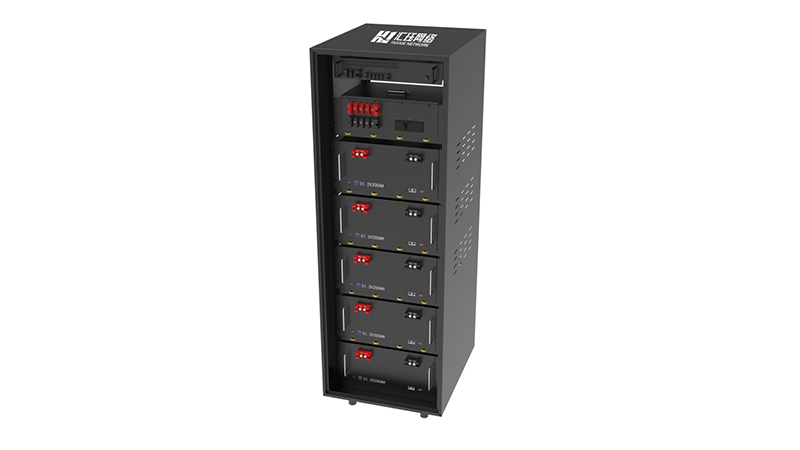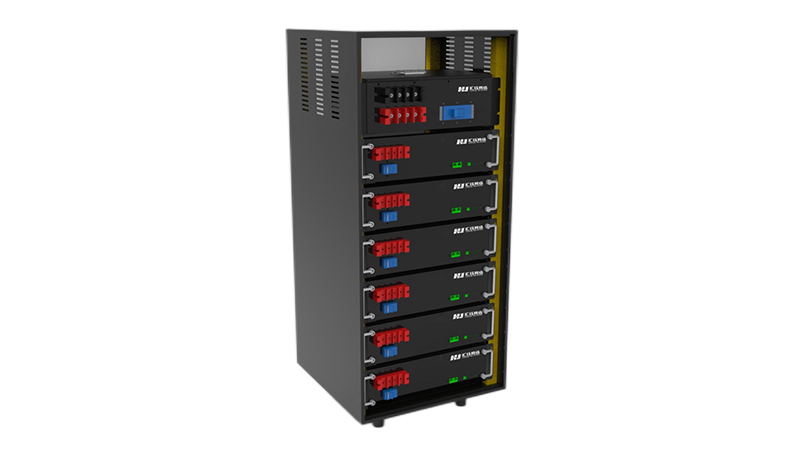
The New Development Trend of Global Green Power
The resolution of the twenty-seventh Conference of the Parties (COP27) of the United Nations Framework Convention on Climate Change emphasized the importance of promoting the construction of clean energy portfolios, and also reflected the development priorities of countries around the world – green power.
In the past 10 months, the global natural gas supply has encountered great challenges, and the supply security of fossil energy has been questioned. Based on the need to build an energy security system, renewable energy represented by wind power, solar power, hydropower, and biomass power generation has received unprecedented attention and attention, and they all belong to green power without exception.

Increasing green power installed capacity is still a strategic focus
The “World Energy Outlook 2022” recently released by the International Energy Agency (IEA) pointed out that by 2050, electricity consumption will reach 50% of global final energy consumption. Reach 65 gigawatts, increase 10 times by 2050, and account for more than 60% of the total.
In Europe, although some countries have restarted coal power, these countries are also simultaneously expanding the “territory” of renewable energy. Germany, Denmark, the Netherlands and Belgium recently launched green power development plans, proposing to increase wind power generation in the North Sea by 10 times by 2050. Danish Prime Minister Mette Frederiksen said the significance of the plan was to provide more than half of all the offshore electricity the EU needs to achieve climate neutrality, and that the North Sea would become “Europe’s green power plant”.
In Africa, Mohamed Adao, founder of Energy Transition Africa, an NGO that works to accelerate the adoption of renewable energy in African countries
Not long ago, it said that Africa could become a renewable energy supply giant. According to estimates, by 2030, Africa is expected to increase its offshore wind power generation capacity by 4 times to 65 GW, and by 2050 it will increase by 10 times to nearly 150 GW. According to Bloomberg New Energy Finance’s 2022 Power Transformation Trends Report, by 2050, Africa can produce 30-60 million tons of green hydrogen per year with the help of abundant solar and wind energy resources.
In Asia, China has proposed the goal of “strive to achieve carbon peaking by 2030 and carbon neutrality by 2060”. , The cumulative installed capacity of photovoltaic power generation should reach more than 1.2 billion kilowatts; following Indonesia’s proposal to achieve 100% green power by 2050, Vietnam’s “National Green Growth Action Plan (2021-2030)” proposed to reduce greenhouse gas emissions per unit of GDP , Promote economic and social green transformation and other goals; India’s photovoltaic installed capacity is growing rapidly. In 2021, the country’s newly installed photovoltaic capacity will account for 7.0% of the world’s newly installed photovoltaic capacity. According to the latest plan released in May, by 2030, India’s installed renewable energy power generation capacity will reach 500 million kilowatts, of which photovoltaic installed capacity will be 300 million kilowatts.
In the Americas, the United States pointed out in the recently released “Solar Energy Future Research” report that the country’s photovoltaic installed capacity will increase from 3% of the total installed capacity in 2021 to 40% in 2035, and reach 45% by 2050. Nearly half of the electricity installed capacity comes from solar energy” goal; Canada’s “Clean Power Regulations” clearly stated that by 2035, the new goal of net zero emissions from the grid will be achieved; the latest research by energy consulting firm Wood Mackenzie points out that Latin America is promoting the development of offshore wind power , By 2050, the installed capacity of wind power will reach 34 GW, and Brazil and Colombia will be the main force to promote new wind power projects.
Green power will not only continue to be a key strategy for energy development in various countries, but will also drive investment in energy storage, hydrogen energy and smart grids.
Ensuring stable and safe supply is the key
Green power is the core of the energy system under construction, and it is the “key” to address climate change. However, whether this key can be used well depends on whether green power can achieve stable supply and “friendly” peak regulation.
The unstable supply of green power is a problem that the world needs to face together. The International Energy Agency pointed out in the “Renewable Energy Power Generation-More Efforts Still Needed” released in September that since 2021, the proportion of renewable energy power generation such as wind power, photovoltaic power generation and hydropower in the power structure will reach 28.7%, but An increase of only 0.4 percentage points over the previous year. There are many inherent factors restricting the rapid development of green power. Photovoltaic power generation only during the day, wind power power generation only when there is wind, and hydropower power generation that depend on the sky will affect the reliability of power supply.
Currently, energy storage is one of the options to solve the reliability problem. As of the end of 2021, the cumulative installed capacity of power storage projects in operation around the world is 209.4 GW, a year-on-year increase of 9%. Among them, the cumulative installed capacity of pumped storage accounted for less than 90% for the first time, a decrease of 4.1 percentage points from the same period last year; the cumulative installed capacity of new energy storage was 25.4 GW, a year-on-year increase of 67.7%. The absolute dominance of energy storage, with a share of more than 90% in the new energy storage market. As of the end of 2021, my country has built 36.39 million kilowatts of pumped storage capacity, an increase of 4.9 million kilowatts over 2020, a year-on-year increase of 15.6%. According to the National Energy Administration’s “Pumped Storage Medium and Long-term Development Plan (2021-2035)”, the total scale of pumped storage in 2025 will reach 62 million kilowatts, and in 2030 it will reach about 120 million kilowatts.
Balancing the system with the help of Energy Internet technology is another option to solve the problem of stable supply. The International Energy Agency’s “Renewable Energy 2022” report pointed out that the increase in grid interconnection capacity and flexibility will help accommodate more green power. In Asia, China has built a power grid with the highest voltage level in the world, the strongest energy resource allocation capability, and the largest grid-connected new energy grid. The installed capacity of grid-connected new energy has reached 580 million kilowatts. Clean electricity is 525 billion kWh; ASEAN has launched a regional power grid transmission renewable energy plan since 2014, which plans to provide opportunities for the development of low-carbon and renewable energy in the ASEAN region and improve the overall security and stability of ASEAN energy. In June this year, as Singapore began to import electricity from Laos, the four-country power integration project of Laos, Thailand, Malaysia, and Singapore was officially launched, which means that the ASEAN power grid construction has taken an important step.
In Europe, better consumption of green electricity is one of the key points of grid upgrade. In July this year, the European Commission proposed the future research and development direction of the energy system based on 55% carbon reduction, and formed the “2022-2025 Integrated Energy System Research and Development Implementation Plan”. One of the research and development directions covered by this plan is to achieve elastic systems through planning for large-scale integration of renewable energy. Key research and development projects include coordination of low-voltage direct current and medium-voltage direct current, AC distribution networks, large-scale integration of distribution of distributed generation System, through access to distributed power generation, energy storage, flexibility requirements, etc. to enhance the stability of the power grid.
The market in Central Asia deserves attention
In the future global green power market, several emerging markets are expected to stand out, and Central Asia is one of them.
Central Asia is rich in green power resources—Tajikistan and Kyrgyzstan are known as “Central Asian Water Towers”. In recent years, Tajikistan and Kyrgyzstan have built power systems centered on renewable energy power generation. In 2021, Kyrgyzstan’s green power will account for more than 70%, and Tajikistan’s hydropower installed capacity will account for 94%.
A hydroelectric facility on the Narin River in Kyrgyzstan. Kyrgyzstan has abundant reserves of hydropower resources, and the current development volume is only about 10%.
Some countries have created market mechanisms for green electricity. Kazakhstan has also actively promoted green energy plans in recent years, establishing a green power settlement center and a green power price adjustment mechanism. Since Mirziyoyev came to power, Uzbekistan has successfully established and operated a bidding mechanism for new energy power generation projects with the help of the World Bank International Financial Center, and has selected wind power and photovoltaic projects worldwide through public bidding for feed-in electricity prices. investors. Driven by the market mechanism, in 2021, Uzbekistan will successfully introduce energy storage and comprehensive energy supporting projects.
On September 16, the leaders of the member states of the Shanghai Cooperation Organization held a meeting of the Council of Heads of State in Samarkand, Uzbekistan, and issued a declaration. The declaration supports the joint implementation of the “Belt and Road” initiative by all parties, including the work to promote the docking of the “Belt and Road” construction and the construction of the Eurasian Economic Union. According to the plan for the construction of the Eurasian Economic Union, technical tests will be carried out from January 1, 2024 to January 1, 2025. During this period, participants in the unified power market of the Union will have the opportunity to familiarize themselves with the rules and regulations and experience the characteristics of the centralized power platform. If preparations, including this test, proceed smoothly, the unified electricity market of the Eurasian Economic Union will be fully operational from January 2025.
The Unified Power Grid of Central Asia has played a vital role in history. Kyrgyzstan and Tajikistan export the remaining power generation to the other three countries when the water volume is sufficient in summer. When the water volume drops in winter and the power generation capacity is insufficient, the above three countries provide power guarantee for Kyrgyzstan and Tajikistan. If a unified electricity market is established, it will not only help the five countries to complement each other’s electricity resources, but China and Kazakhstan are also expected to realize the mutual benefit of clean energy and explore a transnational cooperation model for green electricity.



